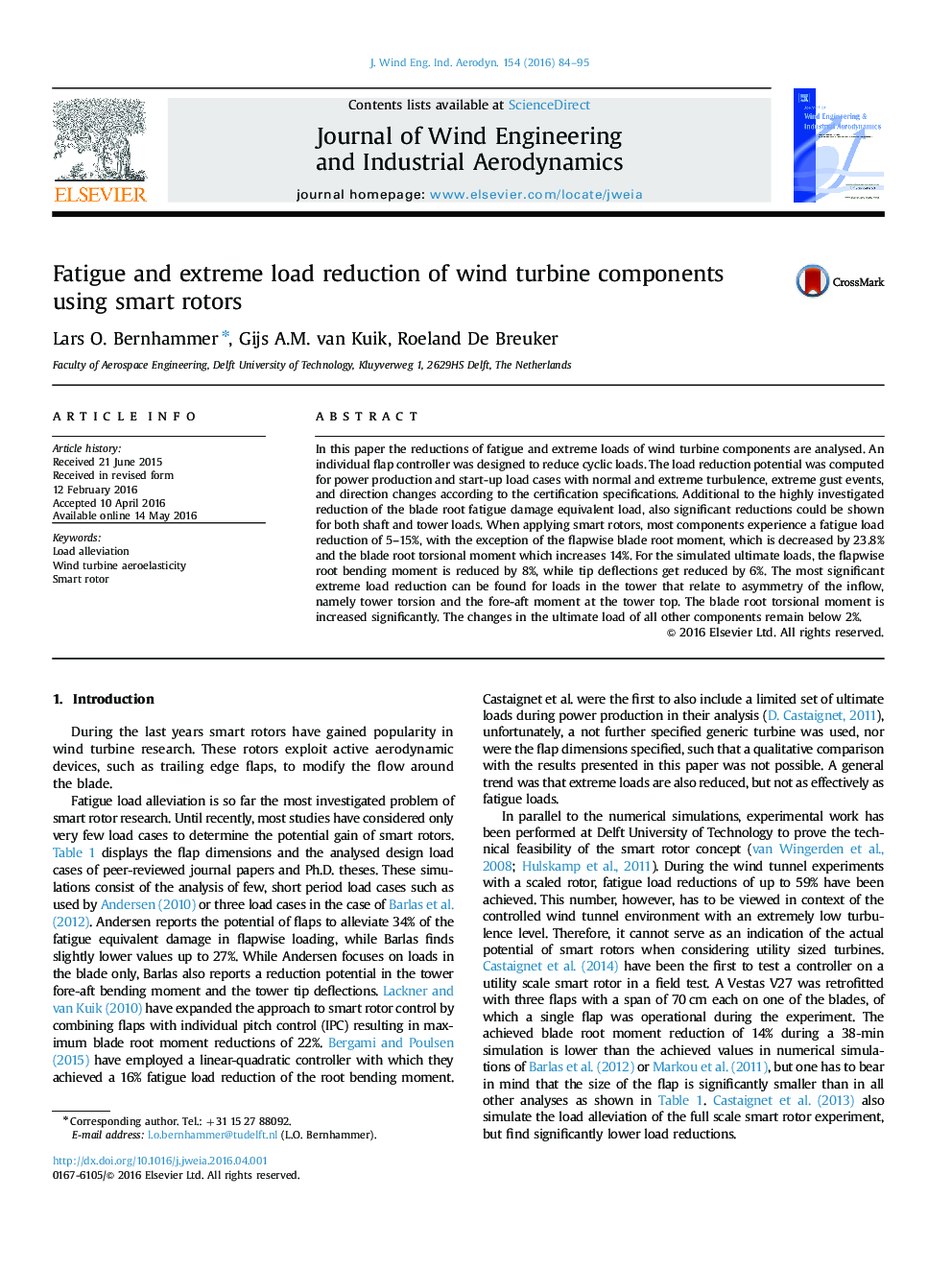| کد مقاله | کد نشریه | سال انتشار | مقاله انگلیسی | نسخه تمام متن |
|---|---|---|---|---|
| 293073 | 511105 | 2016 | 12 صفحه PDF | دانلود رایگان |
• Study of many design load cases including power production, start-up and shut-down.
• Investigation of ultimate load cases.
• Load reduction potential of smart rotors for extreme loads and tip deflections.
• Study of smart rotor impact on other turbine components such as tower or drive train.
In this paper the reductions of fatigue and extreme loads of wind turbine components are analysed. An individual flap controller was designed to reduce cyclic loads. The load reduction potential was computed for power production and start-up load cases with normal and extreme turbulence, extreme gust events, and direction changes according to the certification specifications. Additional to the highly investigated reduction of the blade root fatigue damage equivalent load, also significant reductions could be shown for both shaft and tower loads. When applying smart rotors, most components experience a fatigue load reduction of 5–15%, with the exception of the flapwise blade root moment, which is decreased by 23.8% and the blade root torsional moment which increases 14%. For the simulated ultimate loads, the flapwise root bending moment is reduced by 8%, while tip deflections get reduced by 6%. The most significant extreme load reduction can be found for loads in the tower that relate to asymmetry of the inflow, namely tower torsion and the fore-aft moment at the tower top. The blade root torsional moment is increased significantly. The changes in the ultimate load of all other components remain below 2%.
Journal: Journal of Wind Engineering and Industrial Aerodynamics - Volume 154, July 2016, Pages 84–95
